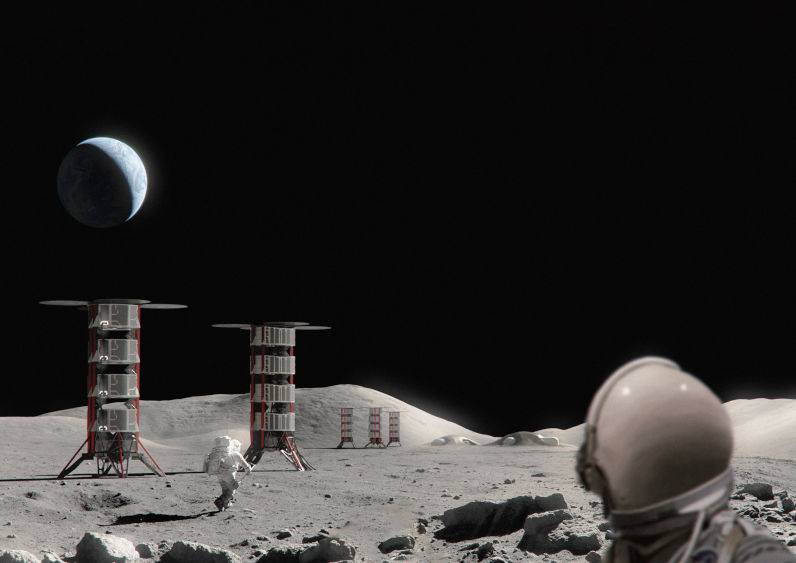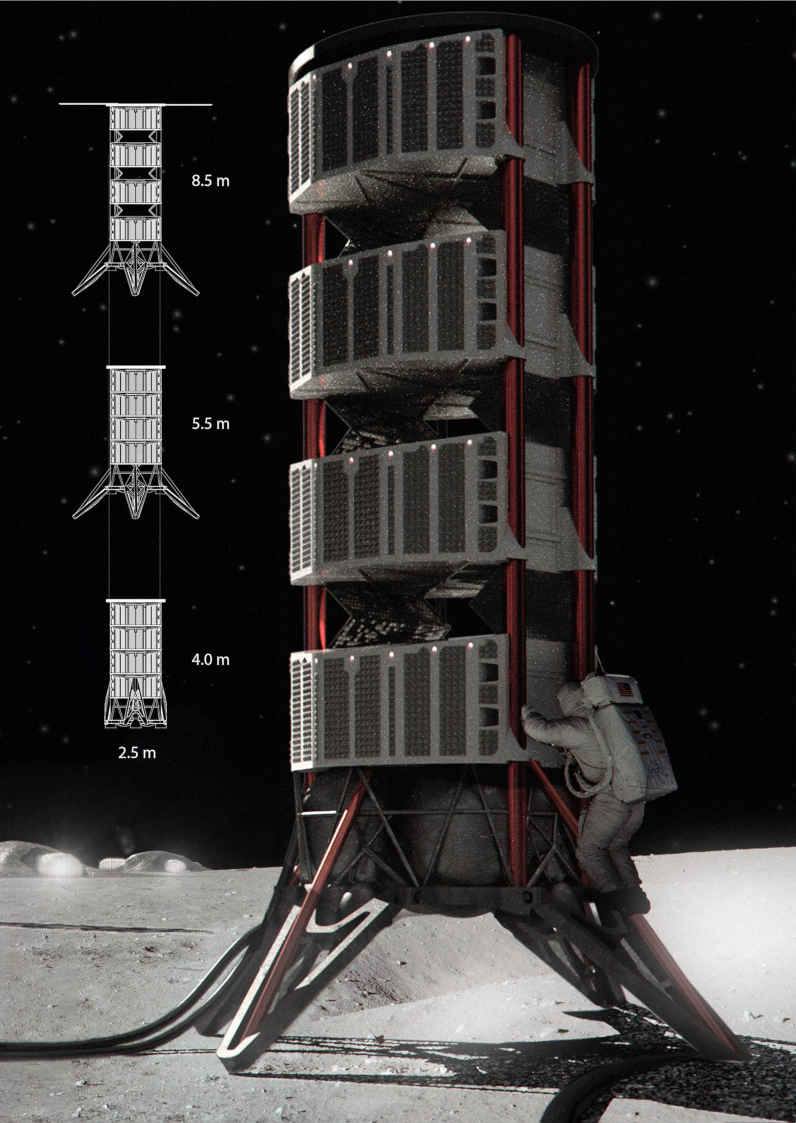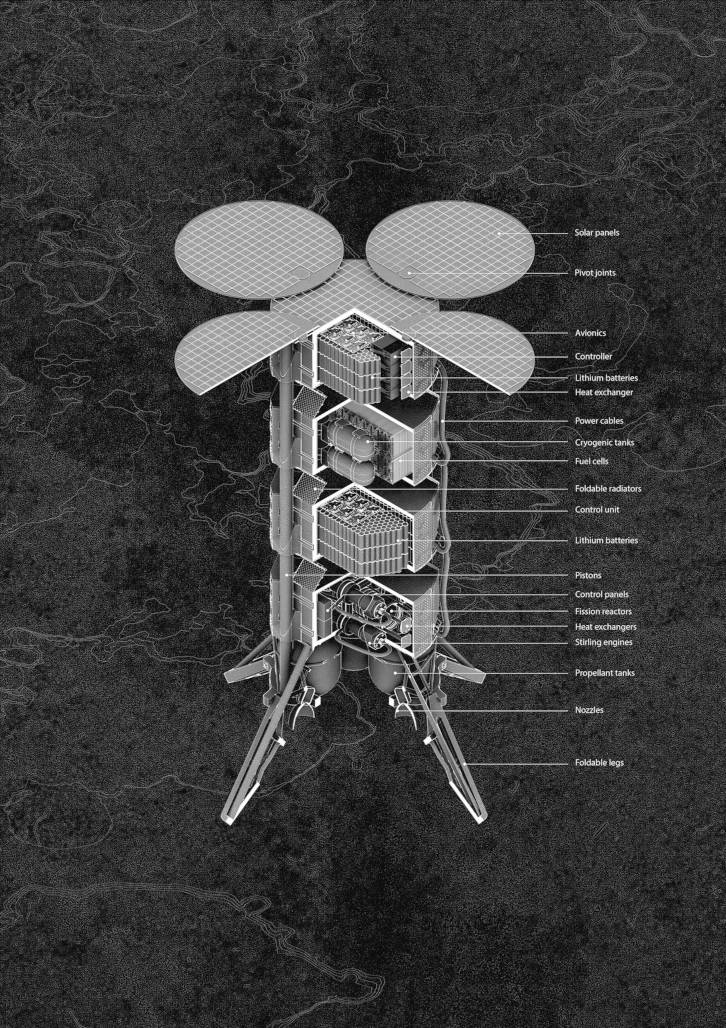Lunar Power Solution
Lunar Night Survival is an international project that proposes a scalable power generation and distribution system to enable a sustained presence on the Moon. This project began at International Space University's Space Studies Program where we and a team of 35 international space professionals met and received the challenge: develop a power solution to survive the lunar night.
Based on roadmaps for Moon exploration, the Lunar Night Survival team created a common vision to develop a sustained human and robotic presence on the Moon and contribute to future activities in an international setting and cooperation.


SCALABILITY
More subunits can be added and new technologies can be incorporated with new power demands.
REDUNDANCY
The Power Cell stores energy to support critical Life Support Systems throughout a two-week lunar night, enabling operations even if the primary generation fails.
STANDARDIZATION
Standard dimensions of sub-units and the Power Cell. The adaptable structure of the Power Cell allows easy integration of new technologies.
FAST DEPLOYMENT
The Power Cell is fully operational within a few hours of landing.
FLEXIBILITY
The Power Cell can be easily relocated to reconfigure the grid, accommodating the evolving infrastructure.

HUMAN CENTRIC
The cell is designed from a human centric perspective so it can be serviced and operated by astronauts. All critical parts are easily accessible. Lights are placed around the subunits' surface to provide an easy and intuitive indication of the Power Cell's health by changing color.
